 The Royal Military Canal runs across the northern edge of the marsh, to Winchelsea.
The Royal Military Canal runs across the northern edge of the marsh, to Winchelsea. Running under Stade Street, the canal, intended to repel invasion during the Napoleonic wars of 1804 to 1815,
Running under Stade Street, the canal, intended to repel invasion during the Napoleonic wars of 1804 to 1815,
 gives central Hythe its character. Now shaded by trees, the canal, 30 feet (10m) wide passes into the marsh from the middle of the town.
gives central Hythe its character. Now shaded by trees, the canal, 30 feet (10m) wide passes into the marsh from the middle of the town.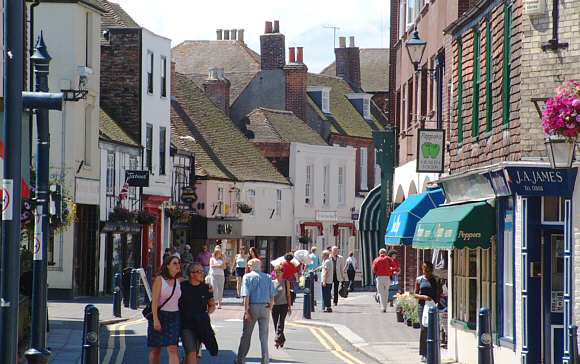
Also built around the same time as a defence against possible invasion by Napoleon were the Martello Towers. In total 74 of these towers were built between Folkestone and Seaford.
and Seaford. The walls were up to 13 ft (4 m) thick, and each tower held 24 men and had a huge cannon mounted on the top.
The walls were up to 13 ft (4 m) thick, and each tower held 24 men and had a huge cannon mounted on the top. They were named after a similar tower at Mortella Point in Corsica which the Navy had captured from the French.
They were named after a similar tower at Mortella Point in Corsica which the Navy had captured from the French. Although never needed for their original purpose they were later used to combat smuggling and also as signalling stations and coastal defences during the two World Wars.
Although never needed for their original purpose they were later used to combat smuggling and also as signalling stations and coastal defences during the two World Wars.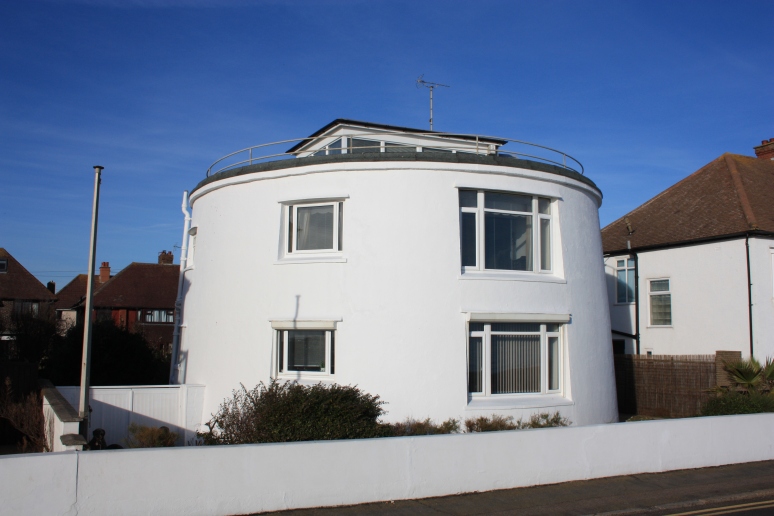 Three of the towers survive at Hythe; one was converted to a house in the 1930s and can be seen along West
Three of the towers survive at Hythe; one was converted to a house in the 1930s and can be seen along West Parade, and the other two are on the beach and are owned by the Ministry of Defence.
Parade, and the other two are on the beach and are owned by the Ministry of Defence.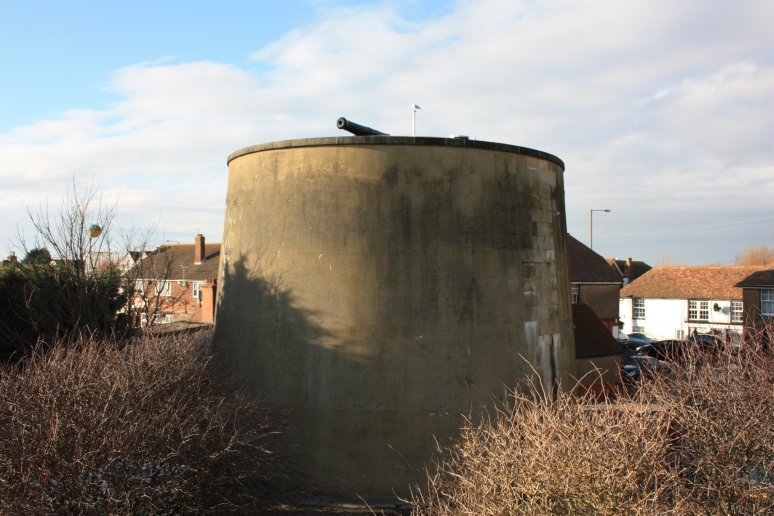
 and Seaford.
and Seaford. Although never needed for their original purpose they were later used to combat smuggling and also as signalling stations and coastal defences during the two World Wars.
Although never needed for their original purpose they were later used to combat smuggling and also as signalling stations and coastal defences during the two World Wars. Three of the towers survive at Hythe; one was converted to a house in the 1930s and can be seen along West
Three of the towers survive at Hythe; one was converted to a house in the 1930s and can be seen along West
 Royal Canal (previously named the royal military canal)
Royal Canal (previously named the royal military canal)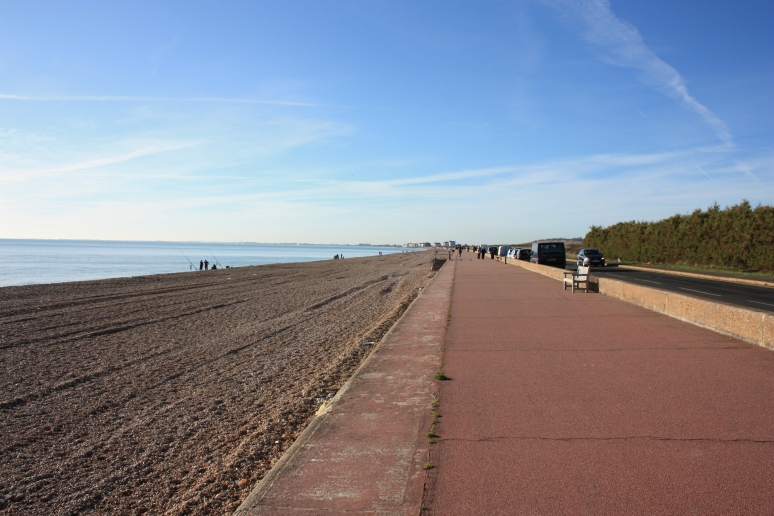 towards the steep incline upon which the parish church of St Leonard was built. From the High Street, alleys lead up to the steeper levels of the town.
towards the steep incline upon which the parish church of St Leonard was built. From the High Street, alleys lead up to the steeper levels of the town.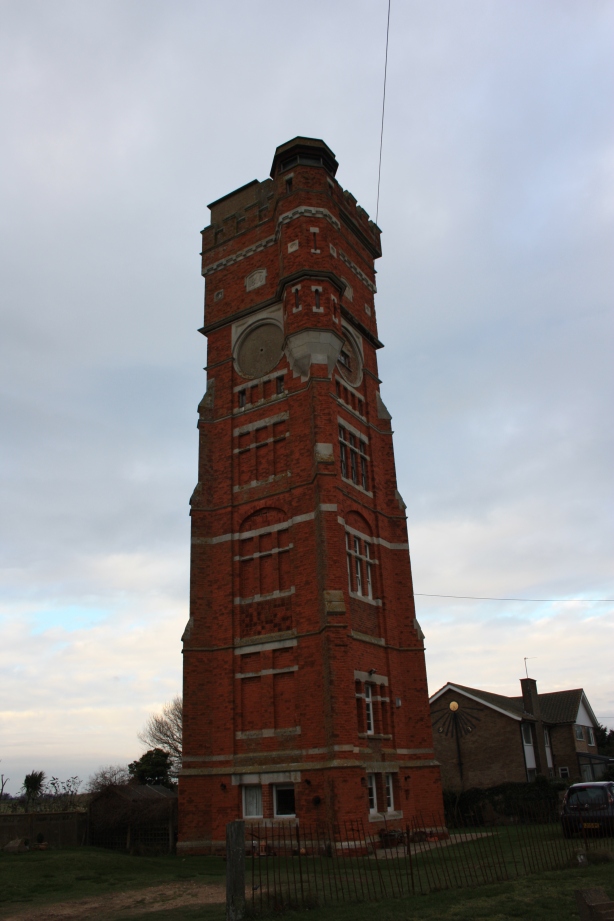
This publication may show the royal canal named as the royal military canal because that was its previous name
 Hythe was once defended by two castles, Saltwood
Hythe was once defended by two castles, Saltwood and Lympne.
and Lympne. Saltwood derives its name from the village in its shadow. During the reign of king Canute the manor of Saltwood was granted to the priory of Christ Church in Canterbury, but during the 12th century it became home of Henry d'Essex, constable of England.
Saltwood derives its name from the village in its shadow. During the reign of king Canute the manor of Saltwood was granted to the priory of Christ Church in Canterbury, but during the 12th century it became home of Henry d'Essex, constable of England.
Thomas Becket had sought from King Henry II restoration of the castle as an ecclesiastical palace. Henry instead granted the castle to Ranulf de Broc.
That the castle had been returned to Becket, as archbishop of Canterbury, and remained a church property until the reign of Henry VIII, when Hythe and Saltwood were to be sequestrated to the Crown , suggests that some complicity by the baron Rranulf de Broc was possible in the murder of Becket. It was during this time at Saltwood, on 28 December 1170, that four knights plotted Becket's death the following day. Hugh de Moreville
, suggests that some complicity by the baron Rranulf de Broc was possible in the murder of Becket. It was during this time at Saltwood, on 28 December 1170, that four knights plotted Becket's death the following day. Hugh de Moreville was one of the knights, along with Reginald Fitzurse,
was one of the knights, along with Reginald Fitzurse, William de Tracey, and Richard le Breton.
William de Tracey, and Richard le Breton.
 , suggests that some complicity by the baron Rranulf de Broc was possible in the murder of Becket. It was during this time at Saltwood, on 28 December 1170, that four knights plotted Becket's death the following day. Hugh de Moreville
, suggests that some complicity by the baron Rranulf de Broc was possible in the murder of Becket. It was during this time at Saltwood, on 28 December 1170, that four knights plotted Becket's death the following day. Hugh de Moreville William de Tracey, and Richard le Breton.
William de Tracey, and Richard le Breton.
From the moment Hythe came under Crown control, the senior official of the town was also a bailiff appointed by the Crown. This state of affairs (uniquely for a Cinque Port) remained until 1575 when Elizabeth I gave the town control of its affairs.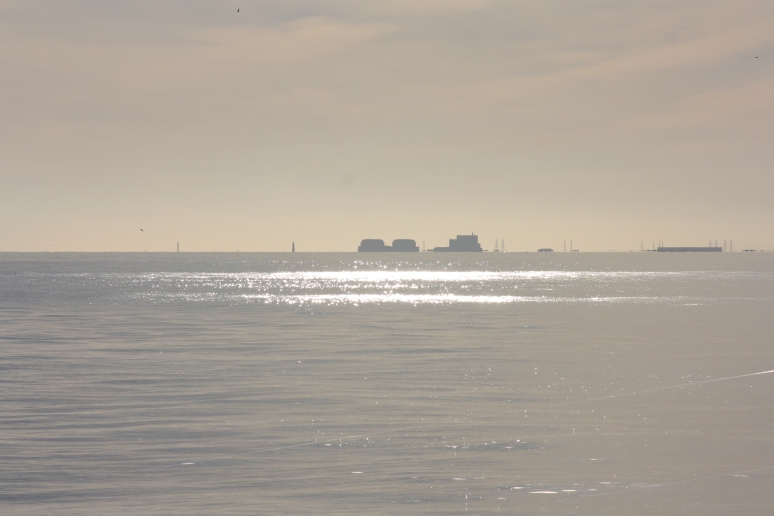

The last Crown bailiff became the first mayor. His name was John Bredgman. A brass inscription bearing his name remains in the parish church, dated 1581.
His name was John Bredgman. A brass inscription bearing his name remains in the parish church, dated 1581.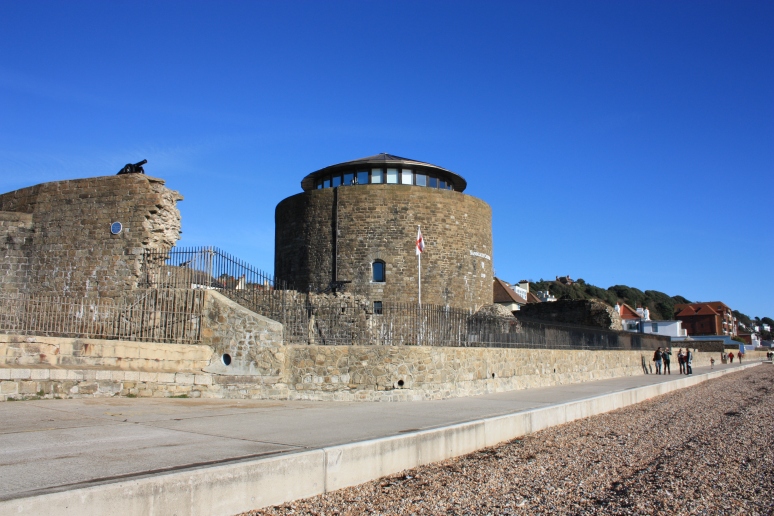 sandgate castle
sandgate castle
 His name was John Bredgman. A brass inscription bearing his name remains in the parish church, dated 1581.
His name was John Bredgman. A brass inscription bearing his name remains in the parish church, dated 1581. sandgate castle
sandgate castle
No comments:
Post a Comment